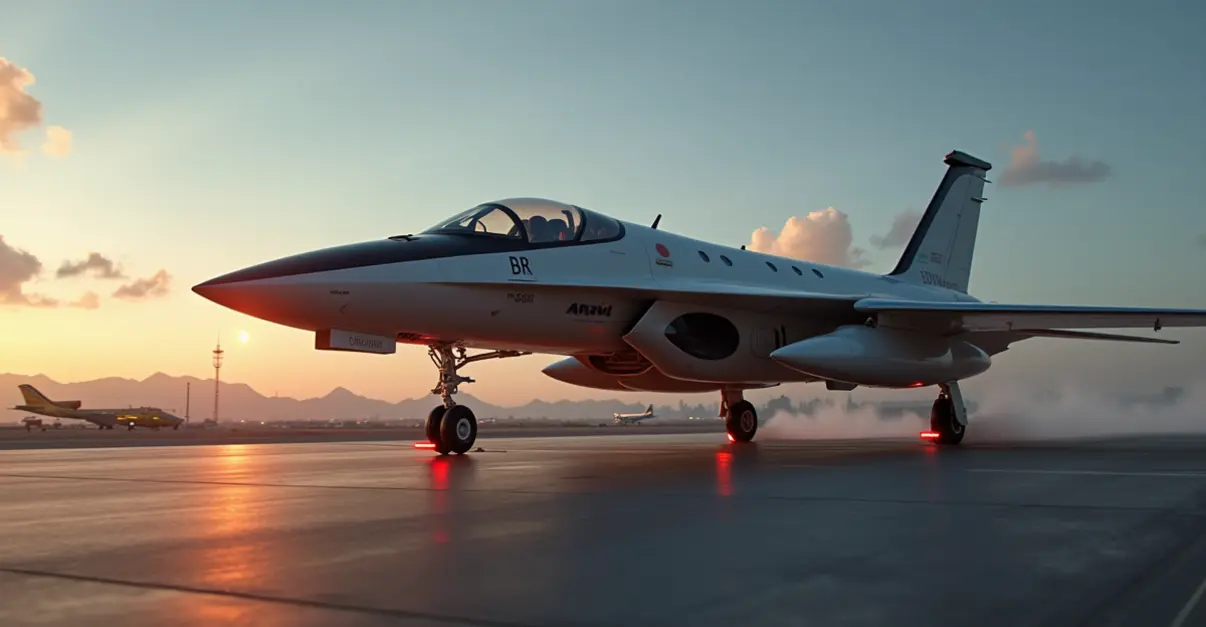Fusion-powered aircraft using nuclear fusion engines could revolutionize military and commercial aviation, enabling indefinite flight without refueling and zero emissions. Recent breakthroughs in fusion technology and significant investment are accelerating development.

The Dawn of Fusion Aviation
In a groundbreaking development that could transform both military and commercial aviation, fusion-powered aircraft are emerging from science fiction into tangible reality. Recent technological breakthroughs and significant private investment exceeding $10 billion are accelerating progress toward aircraft that could fly indefinitely without refueling while producing zero carbon emissions.
Military Applications: The Ultimate Strategic Advantage
The military implications of fusion-powered aircraft are staggering. Unlike conventional aircraft limited by fuel capacity, fusion-powered bombers and surveillance planes could remain airborne for weeks or even months, providing unprecedented strategic advantages. 'The ability to maintain continuous airborne presence without refueling would fundamentally change military doctrine,' says aviation analyst Dr. Michael Chen. 'We're talking about aircraft that could circle the globe multiple times without landing.'
Current military aircraft development is shifting away from all-electric concepts due to battery limitations, making fusion power an attractive alternative. The strategic pivot toward more viable propulsion systems comes as developers recognize that battery technology cannot meet the demanding performance requirements of military aviation, particularly for combat missions requiring extended range and high power output.
Commercial Aviation: A New Era of Sustainable Travel
For commercial aviation, fusion power promises to eliminate the industry's carbon footprint while dramatically reducing operating costs. Boeing has already patented a revolutionary laser-triggered nuclear fusion-powered jet engine that uses high-energy lasers to initiate fusion reactions in hydrogen isotope fuel pellets. This system would generate immense energy while producing only helium and minimal heat as waste byproducts.
'The implications for commercial travel are profound,' explains aerospace engineer Sarah Johnson. 'We could see non-stop flights from New York to Sydney becoming routine, with aircraft that never need to refuel during their operational lifetime. The fuel efficiency is orders of magnitude better than anything we have today.'
Technical Breakthroughs Driving Progress
The International Thermonuclear Experimental Reactor (ITER) project has achieved critical milestones, including the completion of a magnet powerful enough to levitate an aircraft carrier. This pulsed superconducting electromagnet, weighing nearly 3,000 tons, will create the magnetic confinement needed for sustained fusion reactions. Meanwhile, high-temperature superconducting magnets are enabling smaller, more efficient fusion devices that could be adapted for aircraft propulsion.
The IAEA World Fusion Outlook 2025 identifies six key trends driving fusion development, including accelerating progress, diversifying technological approaches, and expanding international collaboration through over 160 operational or planned facilities worldwide.
Challenges and Timeline
Despite the promising developments, significant challenges remain. Developing compact high-energy laser systems, creating materials that can withstand extreme temperatures and radiation, and ensuring economic viability are major hurdles. Regulatory safety approvals will also be crucial for public acceptance.
'We're looking at a 15-20 year timeline before we see operational fusion-powered aircraft,' estimates Dr. Chen. 'The technology is advancing rapidly, but the engineering challenges are immense. We need to develop containment systems that can handle plasma temperatures ten times hotter than the sun's core while being light enough for flight.'
Current projections suggest that fusion could provide up to 50% of global electricity by 2100 in favorable scenarios, with aviation applications following closely behind ground-based power generation.
The Future of Air Travel
As fusion technology matures, it could enable entirely new aircraft designs. Blended-wing body aircraft, which merge the fuselage and wings into one seamless structure, could be particularly well-suited for fusion propulsion. NASA research suggests such designs could burn up to 50% less fuel while offering cabins 40% larger than conventional airliners.
The convergence of fusion power with other aviation innovations like supersonic travel and electric vertical takeoff aircraft points toward a future where air travel becomes faster, cleaner, and more accessible than ever before. While the timeline remains uncertain, the direction is clear: fusion-powered aircraft represent the next great leap in aviation technology, promising to change how we travel and defend our nations forever.

 Nederlands
Nederlands
 English
English









